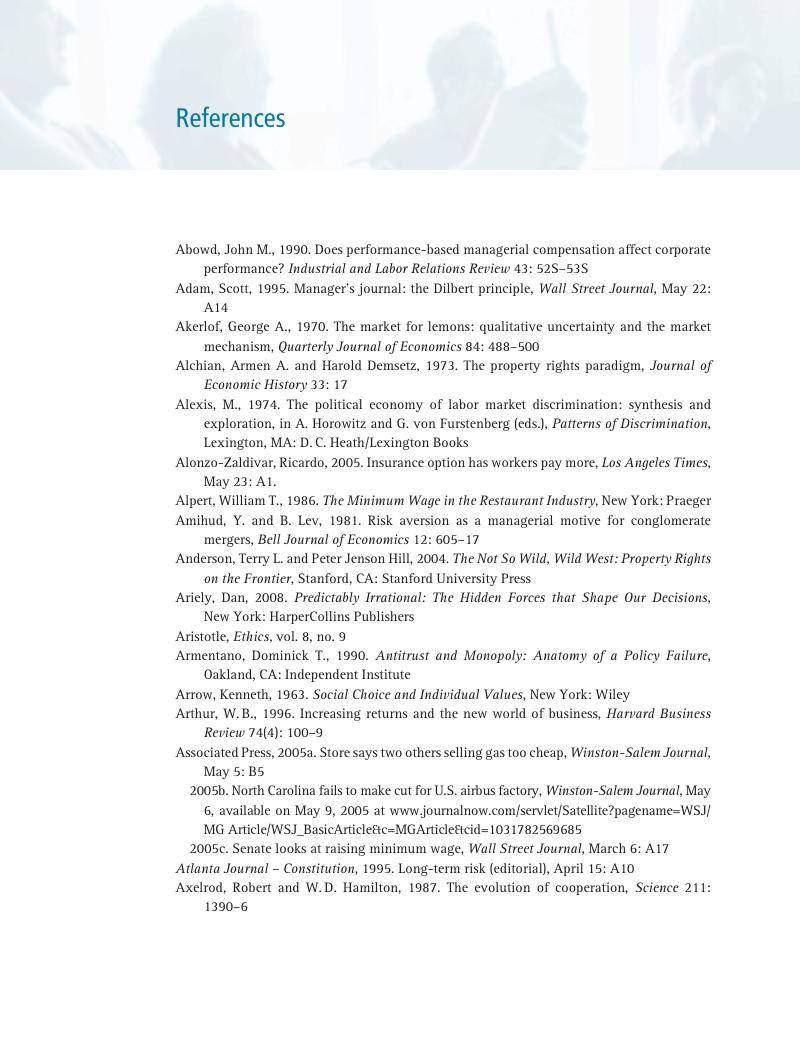Book contents
- Frontmatter
- Contents
- Preface
- How to use this book
- List of online perspectives
- List of further readings online
- List of online video modules
- Book I The market economy, overview and application
- Book II Demand and production theory
- Book III Competitive and monopoly market structures
- References
- Index
- References
References
- Frontmatter
- Contents
- Preface
- How to use this book
- List of online perspectives
- List of further readings online
- List of online video modules
- Book I The market economy, overview and application
- Book II Demand and production theory
- Book III Competitive and monopoly market structures
- References
- Index
- References
Summary

- Type
- Chapter
- Information
- Microeconomics for MBAsThe Economic Way of Thinking for Managers, pp. 492 - 512Publisher: Cambridge University PressPrint publication year: 2010



